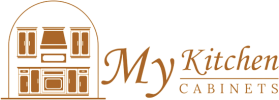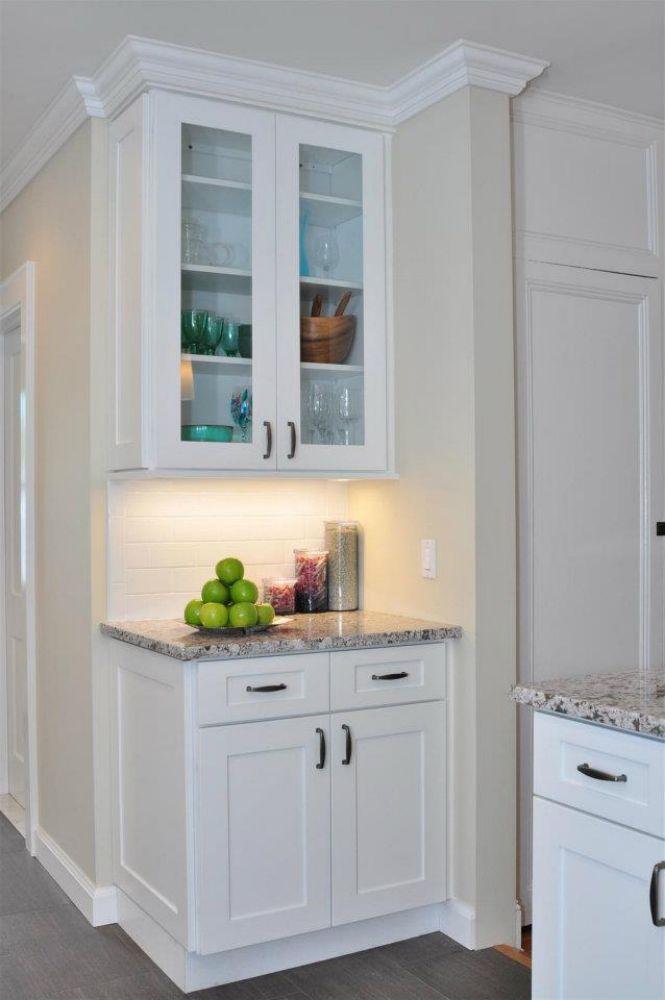Modern Meets Classic: How European-Style Kitchen Cabinets Compare to Traditional American Designs
When planning a kitchen remodel, one of the biggest design decisions homeowners face is choosing between European-style and traditional American-style cabinetry. These two design philosophies represent distinct approaches to function, aesthetics, and construction — each with unique advantages that cater to different tastes and lifestyles.
While both styles can be stunning, understanding how they differ in form, structure, and usability will help you make the best choice for your home. At kitchen cabinets by My Kitchen Cabinets, we offer expertly crafted options that combine the sophistication of European design with the timeless appeal of American craftsmanship, allowing homeowners to create kitchens that balance beauty, practicality, and innovation.
Understanding the Origins of Kitchen Cabinet Design Styles
Before diving into the specifics, it’s helpful to understand where each style comes from and what influenced its evolution.
European-Style Cabinets: Minimalist Efficiency
Originating in post-war Europe, European-style cabinetry reflects a culture of efficiency and simplicity. With smaller living spaces common throughout the continent, designers focused on maximizing storage, creating clean lines, and using sleek materials that make kitchens feel spacious and uncluttered.
European cabinets are heavily influenced by modernist and contemporary aesthetics, emphasizing flat surfaces, seamless hardware integration, and frameless construction for a sleek, functional appearance.
American-Style Cabinets: Tradition and Craftsmanship
American cabinetry, on the other hand, evolved from classic woodworking traditions that emphasized durability, detail, and decorative artistry. Inspired by Colonial, Shaker, and Craftsman influences, these cabinets often feature solid wood frames, raised panels, ornate moldings, and visible hardware that highlight craftsmanship and character.
This style prioritizes warmth, texture, and customization — making it ideal for homeowners who appreciate timeless charm and a touch of traditional luxury.
Construction Differences Between European and American Kitchen Cabinets
One of the most defining distinctions between these two cabinet types lies in their construction method.
1. Frameless vs. Framed Construction
-
European-Style (Frameless):
European kitchen cabinets use frameless construction, meaning the cabinet box itself supports the door hinges without an added face frame. This creates a smooth, seamless exterior and allows for full-access interiors, maximizing storage space. -
American-Style (Framed):
Traditional American cabinets feature a face frame attached to the front of the box. The doors are mounted to this frame, creating a sturdy structure but reducing accessibility slightly due to the frame edges.
Frameless cabinets embody efficiency and modernity, while framed cabinets highlight traditional craftsmanship and visual depth.
Aesthetic Differences: Clean Lines vs. Classic Details
European Aesthetics
European cabinets are known for their sleek, minimalist look. They often feature:
-
Flat-panel or slab-style doors.
-
Hidden or integrated handles.
-
Glossy, matte, or textured laminate finishes.
-
Straight, uninterrupted lines that create a unified, contemporary appearance.
The result is a kitchen that feels clean, modern, and spacious — ideal for homeowners who value a clutter-free environment and modern elegance.
American Aesthetics
American-style kitchen cabinets typically emphasize:
-
Framed doors with raised or recessed panels.
-
Visible handles and knobs, often decorative.
-
Rich wood stains or painted finishes.
-
Crown molding, trim, or beadboard details.
These visual elements evoke warmth, tradition, and familiarity. They suit homes with rustic, farmhouse, or transitional interior styles that emphasize comfort and craftsmanship.
Space Utilization and Storage Capacity
How cabinets are built greatly impacts how much usable space they offer.
European-Style Cabinets: Maximized Functionality
Because frameless construction eliminates the face frame, European cabinets provide more internal storage space. The shelves and drawers extend fully to the edge of the cabinet box, optimizing every inch.
Additionally, modern European design incorporates organizational systems like:
-
Pull-out drawers for pots and pans.
-
Vertical dividers for trays and cutting boards.
-
Soft-close hinges and full-extension slides.
-
Integrated recycling and waste management systems.
American-Style Cabinets: Classic Storage with Custom Options
Framed cabinetry sacrifices a small amount of space due to the frame but compensates with versatility. American-style cabinets are often built to accommodate custom features like:
-
Lazy Susans for corner cabinets.
-
Appliance garages for mixers or coffee makers.
-
Glass-front display cabinets for decorative dishware.
-
Deep drawers for cookware or baking sheets.
While slightly less efficient in interior space, American cabinets excel in personalized storage and design flexibility.
Materials and Finishes
European Cabinets: Modern Materials and Engineered Precision
European-style kitchen cabinets often utilize high-quality engineered materials such as:
-
MDF (Medium Density Fiberboard): Perfect for smooth painted or laminated finishes.
-
Thermofoil: Durable and resistant to moisture.
-
Acrylic and Lacquer: Offer high-gloss, ultra-modern appearances.
-
Textured Melamine: Provides realistic wood-grain effects with easier maintenance.
These materials are designed for consistency, clean edges, and low maintenance — perfect for contemporary households.
American Cabinets: Solid Wood Craftsmanship
American cabinets typically feature:
-
Hardwoods: Maple, oak, cherry, hickory, or walnut.
-
Natural Finishes: Stains that highlight grain patterns and character.
-
Painted Surfaces: Often in whites, creams, or deep blues for a timeless, cozy aesthetic.
While solid wood requires more upkeep, it offers unmatched warmth, texture, and authenticity.
Hardware and Functionality
European Hardware Innovations
European-style cabinetry is known for advanced functionality. Hinges, slides, and lift systems are often integrated seamlessly into the design. Common features include:
-
Soft-Close Hinges and Slides: Standard in most modern European designs.
-
Push-to-Open Systems: Allows handle-free cabinet doors for a sleek appearance.
-
Lift-Up and Sliding Doors: Perfect for compact kitchens, improving accessibility.
-
Hidden Hardware: Maintains a clean, modern aesthetic.
American Hardware Traditions
Traditional American cabinets rely on visible hardware for both function and decoration. Expect features such as:
-
Classic Knobs and Pulls: Available in metals like brass, bronze, or nickel.
-
Decorative Hinges: Sometimes exposed for a vintage touch.
-
Standard Drawer Glides: Durable and reliable, with optional soft-close upgrades.
While less futuristic, American hardware choices offer character and customization for homeowners who appreciate traditional design details.
Maintenance and Longevity
European Cabinets
Because many European cabinets use engineered materials and seamless finishes, they’re easy to clean and highly resistant to moisture, scratches, and staining. Their durability depends on the quality of the material and the finish application.
However, glossy or lacquered surfaces may require frequent polishing to prevent fingerprints or smudges.
American Cabinets
Solid wood cabinetry requires more maintenance, as natural materials are sensitive to humidity and temperature changes. Regular polishing and proper ventilation are essential to preserve finish quality.
That said, American cabinets can last for generations with proper care—and many homeowners appreciate the way natural wood ages gracefully over time.
Installation and Customization Options
European Cabinets: Streamlined Installation
European-style cabinets often come in modular systems. This means they’re designed for easy installation, with standardized sizing that fits perfectly together. This modularity makes European cabinets ideal for modern builders or remodelers who want precision and efficiency.
Customization is typically limited to material, finish, and configuration choices rather than intricate design alterations.
American Cabinets: Highly Customizable Designs
American cabinetry is known for its craftsmanship and adaptability. Homeowners can choose from stock, semi-custom, or fully custom options — with virtually limitless possibilities in door styles, dimensions, finishes, and embellishments.
While installation may take longer, the end result offers more creative freedom and individuality.
Cost Comparison Between European and American Cabinets
European-Style Cabinets
European cabinets generally cost more upfront due to their high-tech hardware, precision engineering, and contemporary finishes. However, modular production and efficient design can offset costs in larger projects.
They’re an excellent investment for homeowners who value long-term durability, easy maintenance, and sleek aesthetics.
American-Style Cabinets
Traditional American cabinets range in price depending on material and craftsmanship. Stock options are budget-friendly, while custom solid wood designs can reach higher price points.
Their long lifespan and timeless style often make them worth the investment, especially in classic or transitional homes.
Design Flexibility and Visual Impact
European Design Appeal
European kitchen cabinets create an ultra-modern, minimalist aesthetic that pairs beautifully with stainless steel appliances, quartz countertops, and open floor plans. The clean lines and glossy finishes enhance light reflection, making kitchens feel larger and brighter.
American Design Appeal
American-style cabinets fit beautifully into homes that value warmth and tradition. They complement natural stone countertops, farmhouse sinks, and cozy architectural elements. Their rich textures and visible craftsmanship evoke comfort and nostalgia.
Which Cabinet Style Is Right for You?
Choosing between European and American kitchen cabinets depends on several factors:
-
Design Preference: Do you prefer minimalist or traditional charm?
-
Space Constraints: European styles suit smaller spaces; American styles shine in larger kitchens.
-
Maintenance: Engineered materials require less upkeep than natural wood.
-
Budget: European cabinets tend to cost more initially, but both offer strong long-term value.
-
Lifestyle: Frequent cooks might prefer the efficiency of European cabinets, while entertainers may love the warmth of traditional designs.
At My Kitchen Cabinets, we help homeowners evaluate their needs and aesthetic preferences to select cabinetry that perfectly fits their lifestyle.
The Hybrid Approach: Best of Both Worlds
Many modern homeowners combine European and American elements for a transitional or contemporary-classic aesthetic.
Examples include:
-
Frameless European construction paired with traditional shaker doors.
-
Minimalist European-style upper cabinets with warm American-style wood lowers.
-
Modern flat-panel doors accented by decorative moldings.
This fusion approach allows homeowners to enjoy the efficiency of European functionality with the inviting charm of American tradition.
Sustainability Considerations
Both European and American cabinetry can be eco-friendly when made with responsible materials and processes.
European manufacturers often lead in sustainability standards, using recycled materials, low-VOC finishes, and efficient production methods.
American cabinet makers, including My Kitchen Cabinets, are increasingly embracing similar eco-conscious practices such as:
-
Sourcing FSC-certified wood.
-
Using water-based, non-toxic finishes.
-
Implementing energy-efficient production systems.
Choosing sustainable cabinetry not only benefits the environment but also ensures healthier indoor air quality for your home.
Conclusion: Choosing the Perfect Cabinet Style for Your Dream Kitchen
When comparing European-style and traditional American kitchen cabinets, it’s clear that both offer exceptional advantages—each catering to a distinct design philosophy and lifestyle.
European cabinets deliver sleek minimalism, efficient storage, and modern innovation, making them ideal for contemporary homes. American-style cabinets, on the other hand, offer enduring warmth, handcrafted quality, and limitless customization, creating timeless appeal that never goes out of style.
At My Kitchen Cabinets, we specialize in combining both worlds—merging European precision with American artistry to create cabinetry that elevates your home’s aesthetic and functionality. Whether you’re drawn to the seamless lines of modern design or the rich details of traditional craftsmanship, our team ensures your kitchen reflects the perfect balance of style, quality, and individuality.
Ultimately, the best choice is one that complements your lifestyle, aligns with your design vision, and transforms your kitchen into a space you’ll love for years to come.
FAQs About European vs. American Kitchen Cabinets
1. What is the biggest difference between European and American kitchen cabinets?
The primary difference is in construction. European cabinets are frameless with sleek, modern finishes, while American cabinets use framed construction and often feature traditional door styles with decorative details.
2. Which type of cabinet offers more storage space?
European cabinets generally offer slightly more storage space because frameless designs allow drawers and shelves to extend fully to the edge of the cabinet box.
3. Are European kitchen cabinets more expensive than American ones?
European cabinets tend to be pricier due to advanced hardware, high-quality materials, and contemporary finishes. However, American cabinets vary widely in cost depending on whether you choose stock, semi-custom, or fully custom designs.
4. Can I mix European and American styles in one kitchen?
Yes! Many homeowners combine both styles—using frameless European upper cabinets for a clean look and framed American lower cabinets for warmth and contrast. This hybrid approach is both trendy and functional.
5. Which cabinet style is more durable?
Both are durable when made with quality materials. European cabinets excel in structural efficiency and engineered finishes, while American cabinets are often made from solid hardwood, offering timeless strength and repairability.
Read: What kitchen cabinets are best for rental properties or income homes?
Read: What certifications should I look for when buying safe kitchen cabinets?

